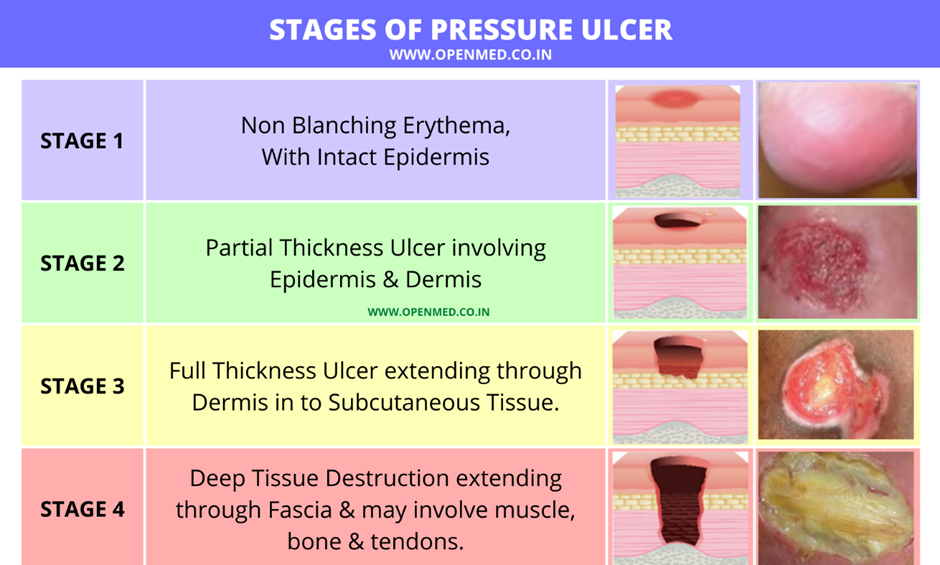A nurse is assisting with the care of a client who arrives at the emergency department after an industrial explosion. The nurse inspects the wound on the client's leg has and finds torn skin tissue underneath. The nurse should report this as which of the following types of wounds?
Abrasion
Contusion
Laceration
Puncture
The Correct Answer is C
A. Abrasion:
This type of wound occurs when the skin rubs or scrapes against a rough surface. It's often referred to as a "scrape" and typically involves superficial damage to the skin without penetration or tearing.
B. Contusion:
Commonly known as a bruise, a contusion results from blunt trauma to the body, causing blood vessels to break and leak blood into the surrounding tissues. The skin remains intact, but there's discoloration due to the blood.
C. Laceration:
This type of wound involves a tear or irregular cut in the skin, often with jagged or rough edges. Lacerations typically result from sharp or blunt trauma that causes the skin to tear.
D. Puncture:
Puncture wounds occur when a sharp object pierces the skin and underlying tissues, creating a small, deep hole. These wounds might not bleed much externally but can cause damage to internal structures and carry a risk of infection due to the depth and possible trapping of debris.
Nursing Test Bank
Naxlex Comprehensive Predictor Exams
Related Questions
Correct Answer is D
Explanation
A. Intact skin with localized erythema:
Explanation: This description is more consistent with a stage 1 pressure injury, where there is non-blanchable erythema.
B. Full thickness skin loss with visible bone:
Explanation: This description is more consistent with a stage 4 pressure injury, which involves extensive tissue loss, including exposure of bone.
C. Full thickness skin loss with visible adipose tissue:
Explanation: This finding is characteristic of a stage 3 pressure injury, where the loss of tissue extends down to the subcutaneous layer.
D. Partial-thickness skin loss with red tissue in the wound bed:
Explanation: This description is consistent with a stage 2 pressure injury, where there is partial-thickness skin loss involving the epidermis and possibly the dermis, forming a shallow open ulcer with a red-pink wound bed.

Correct Answer is C
Explanation
A. To confirm the placement of the NG tube:
Confirming NG tube placement is typically done using other methods, such as auscultation of air insufflation, pH testing, or X-ray. Gastric residual measurement helps assess the status of the stomach content but is not the primary method for confirming tube placement.
B. To determine the client's electrolyte balance:
While the gastric contents do contain electrolytes, the primary purpose of measuring gastric residual is to assess gastric emptying and potential feeding intolerance. It is not the most accurate method for determining overall electrolyte balance.
C. To identify delayed gastric emptying:
This is the correct and primary purpose. Measuring gastric residual helps in identifying if there's a delay in the stomach emptying the previously administered feeding, which can inform the nurse about the client's tolerance to enteral nutrition.
D. To remove gastric acid that might cause dyspepsia:
The process of measuring gastric residual doesn't involve removing gastric acid. It's more about assessing how much of the previously administered feeding remains in the stomach. If there's a high residual volume, it may suggest delayed emptying or feeding intolerance. The focus is on adjusting the feeding plan rather than removing gastric acid.
Whether you are a student looking to ace your exams or a practicing nurse seeking to enhance your expertise , our nursing education contents will empower you with the confidence and competence to make a difference in the lives of patients and become a respected leader in the healthcare field.
Visit Naxlex, invest in your future and unlock endless possibilities with our unparalleled nursing education contents today
Report Wrong Answer on the Current Question
Do you disagree with the answer? If yes, what is your expected answer? Explain.
Kindly be descriptive with the issue you are facing.
